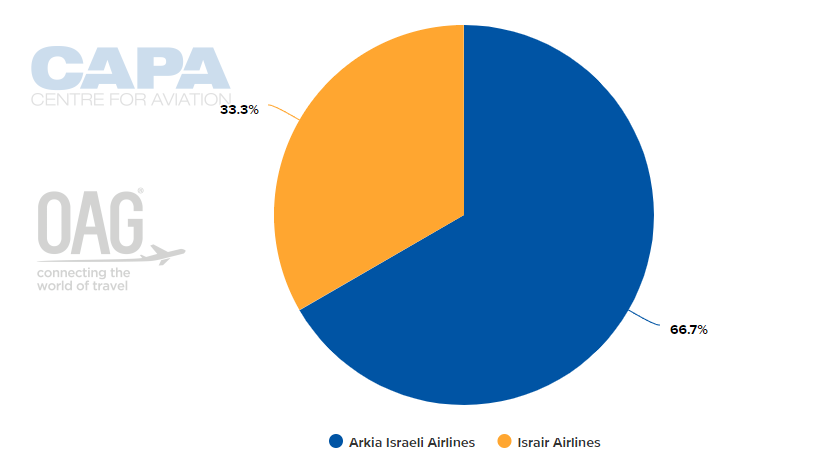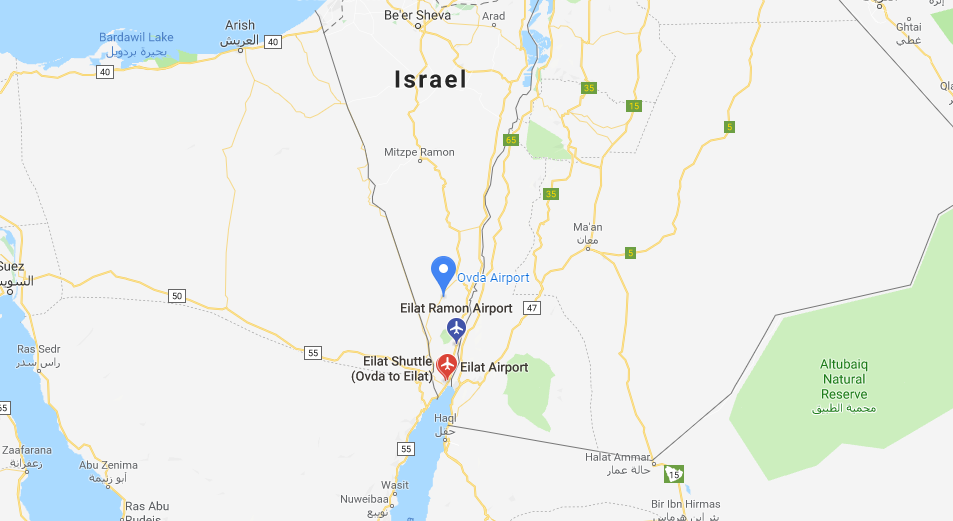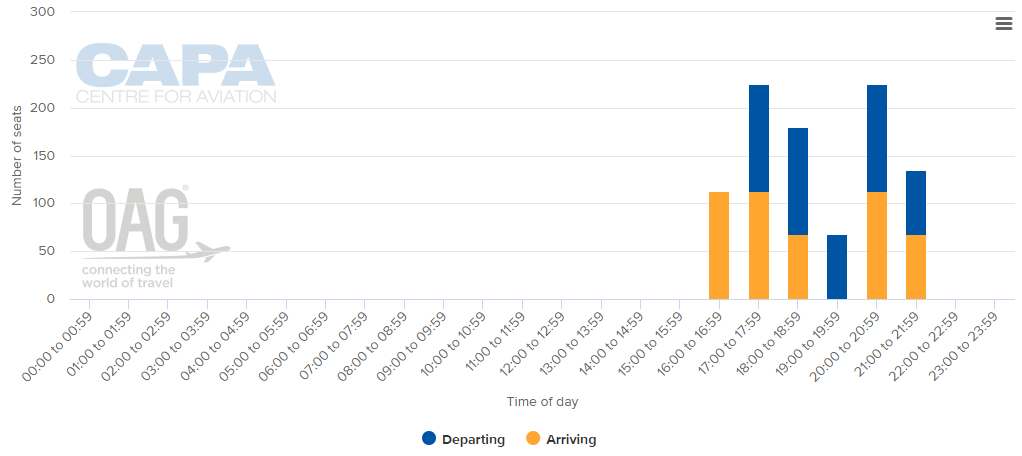Summary:
- Eilat's Timna Ramon International Airport has opened following years of security-driven delays;
- Only domestic services operate presently but they will be joined by international ones from Ryanair and existing services moved from Ovda Airport;
- The airport anticipated two million passengers in its first full year but future prospects are not clear cut.
The USD500 million, state-of-the-art Eilat Timna International Airport had been inaugurated on 21-Jan-2019 and is named in memory of the first Israeli astronaut, Ilan Ramon, who perished in the Columbia Space Shuttle disaster, and his son Assaf, a fighter pilot. Flights commenced on 04-Feb-2019, with domestic movements from Israir Airlines and Arkia Israeli Airlines.

It has a 3,600 m (11,800 ft) runway, longer than the runway at the existing Eilat Airport, which will allow large aircraft to land. Its length is superfluous momentarily. According to CAPA - Centre for Aviation Airport Profiles, Israir and Arkia are the only two (and full service but not aligned) airlines operating currently from the new facility and their deployed aircraft types - the Embraer 190 and ATR-42 - have no need for such an operational distance.
CHART - Operations at Eilat Timna Ramon International Airport are currently limited to domestic services of local carriers Source: CAPA - Centre for Aviation and OAG (data: w/c 11-Feb-2019)
Source: CAPA - Centre for Aviation and OAG (data: w/c 11-Feb-2019)
International services are scheduled to commence gradually from early in Mar-2019, operated by Ryanair. All domestic services are planned to be transferred from Eilat's J Hozman Airport to the Ramon Airport by 18-Mar-2019, at which point the former will close. International services to/from Ovda Airport will all be transferred to Ramon Airport by 02-Apr-2019.
Not only will the airport replace the existing Ovda Airport, it will serve as an alternative to Ben-Gurion International Airport in Tel Aviv, over 100 km away.
MAP - Timna Ramon International Airport is midway between Eilat's domestic and international airports Source: Google Maps
Source: Google Maps
Eilat is Israel's southernmost city, a port and a popular vacation resort at the northern tip of the Red Sea, on the Gulf of Aqaba. The city offers beaches, coral reef, nightlife and desert landscapes which collectively make it a popular destination for both domestic and international tourism.
The city's population is around 50,000 and it lies within the Southern Negev Desert, adjacent to the Jordanian port city of Aqaba and an Egyptian village, Taba. Saudi Arabia lies across the Gulf, to the southeast. It goes without saying that security requirements have figured prominently in the airport's design and they were partly responsible for a delay in opening that lasted for years.
For the time being the airport will be virtually unoccupied for most of the day. For five days of the week services only operate between 21:00 and 22:00. On Sundays there are no services at all. The chart below is for operations (arriving and departing seats are identified) on the busiest day of the week, Monday. Even then, operations are only intermittent over a period of five hours in the evening.
CHART - Current activity at Eilat's Timna Ramon International Airport are limited to a short operational window in the evenings Source: CAPA - Centre for Aviation and OAG (data: Monday 11-Feb-2019)
Source: CAPA - Centre for Aviation and OAG (data: Monday 11-Feb-2019)
Of course, all this will change with the arrival of Ryanair, with initial services to and from Poznan (Poland) and Prague. When Ovda services are transferred Eilat Timna Ramon should also receive flights by, inter alia, WizzAir, easyJet, Transavia, SAS, Finnair, Edelweiss Air from Switzerland and Russia's Ural Airlines: also possibly British Airways.
The airport anticipates handling two million passengers in its first year, increasing to 4.2 million by 2030. But local media has not been convinced that an airport of this size and at this cost was justified, pointing out that:
- Some of the capacity was dictated by a decision made during the 2014 Gaza War to make Ramon Israel's backup airport if Tel Aviv's Ben Gurion International Airport had to be temporarily closed;
- There are few return visits made by foreign tourists to what is an expensive city, even if they benefit from low, subsidised airfares;
- Those subsidies (USD70 per foreign passenger in the winter) have put the region back on the tourist map but they could be discontinued leaving the airport with mainly irregular domestic flights in the off-peak season.